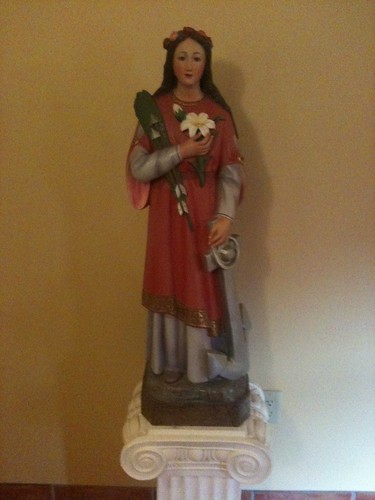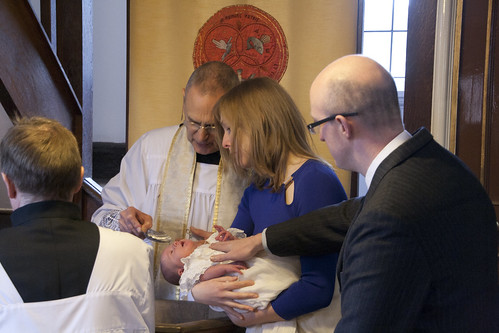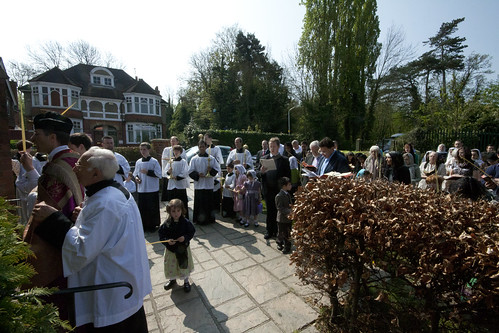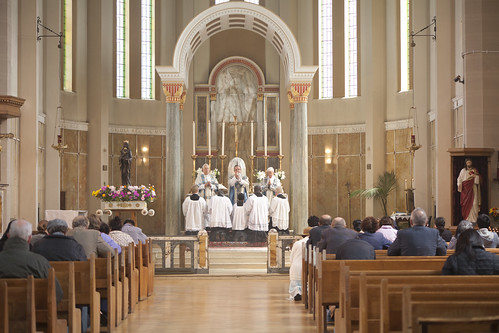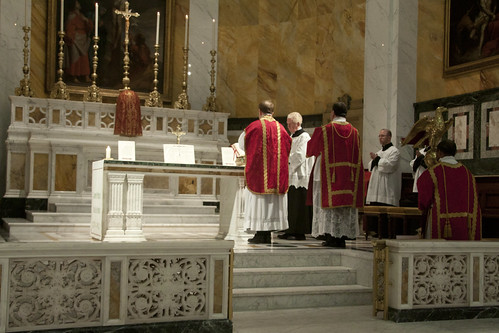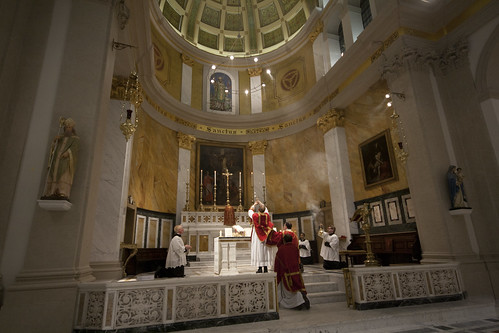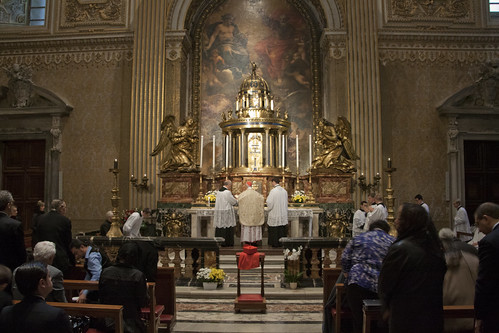 |
| Feeding the hungry, at the Summer School |
In fact giving people money is often the easy option: it is quick, it is simple, there are no ramifications to worry about, no ongoing relationship, and no superior people in the com box to say you are being patronising. The Bones has written a lot over the years about talking to the homeless, helping them with often complex practical problems, supporting them in their dealings with the authorities. This takes time, emotional energy, even a degree of experience and specialist knowledge. There is an important apostolate here, especially now that the Citizens' Advice Bureau has lost so many branches,
if the Church wanted to get involved in a systematic way. It would be a lot more complicated than handing over the price of a bus fare at the presbytery door after listening to a sob story you can't bring yourself to believe.
 |
| Passing on practical aspects of Catholic culture: the Summer School |
The idea that all problems can be solved with money, or at least with physical resources, is something which, without anyone explicitly believing it, might be called the guiding principle of the Welfare State. It is a paradox of the philosophy of action that you can be guided by a belief which you actually think is false, when you stop to think. We need to free ourselves from it. St Theresa of Calcutta said:
“You, in the West, have millions of people who suffer such terrible loneliness and emptiness. They feel unloved and unwanted. These people are not hungry in the physical sense, but they are in another way. They know they need something more than money, yet they don't know what it is.
“What they are missing, really, is a living relationship with God.”
 |
| Giving witness to the Faith: the LMS Oxford Pilgrimage |
 |
| Passing on the Faith to children: Fr Booth talking about Bl Dominic Barberi at the Summer School |
 |
| Walsingham Pilgrimage last year |
But we need to do more, we need to preserve and pass on a broader culture, an understanding of history, music, art. We need to strengthen a sense of Catholic identity, of Catholic solidarity and community, shared songs and spirituality, shared experiences, mutual understanding, sympathy, advice. This sounds like a tall order: it is a lot more than a soup-kitchen can deliver. But that is exactly what the St Catherine's Trust seeks to do with the Family Retreat and the Summer School, and it is what the Latin Mass Society is doing with our Pilgrimages and conferences.
I'm not suggesting that trads are the only people addressing these problems. Rather, I'm suggesting that the way to address them may already be under our noses. Perhaps people should stop lamenting the fact that the 'Church should be doing more', and enable the Church to do more by getting involved in the things which are already happening in the Church. As T.S. Eliot wrote:
The desert is not remote in southern tropics
The desert is not only around the corner,
The desert is squeezed in the tube-train next to you,
The desert is in the heart of your brother.
 |
| Walsingham Pilgrimage on the Holy Mile to the Holy House |

